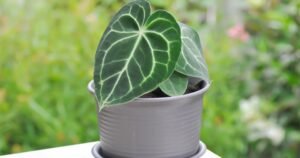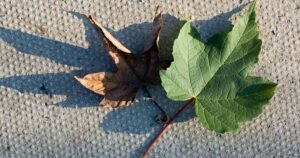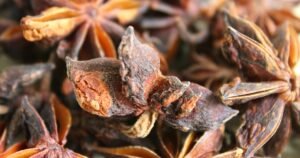While succulent plants originate from semi-desert regions, they still require a significant amount of water to thrive. Therefore, if your succulent is not receiving the necessary water for its growth, there is a substantial likelihood that its leaves may turn brown and become dehydrated.
Succulent leaves turning brown and shriveling can be a cause for concern for any plant enthusiast. This is usually a symptom of a plant under stress. Several factors could contribute to this condition: Overwatering, underwatering, insufficient sunlight, or temperature extremes. Overwatering is a common mistake, as succulents require a dry environment with minimal moisture. On the other hand, they also need a sufficient amount of water to thrive.
Insufficient sunlight can impede photosynthesis, causing the leaves to brown and wither. Finally, succulents do not do well in extreme temperature conditions, and sudden changes can cause stress, leading to browning and shriveling leaves.
Introduction
Succulent Leaves Turning Brown and Shriveling? Succulents are a diverse group of plants that have adapted to arid environments. Their ability to store water in their leaves, stems, and roots makes them well-suited for dry conditions. However, despite their hardiness, succulents can experience issues such as browning and fading leaves. This section introduces the topic and outlines the importance of addressing this problem to ensure the health and aesthetics of succulents.
Common Causes of Succulent Leaves Turning Brown and Shriveling
Understanding the underlying causes is crucial to address the issue of browning and shriveling succulent leaves effectively. In this section, we explore the potential reasons behind this problem.
Overwatering
Succulents are adapted to survive in arid conditions and are highly susceptible to overwatering. When excess water is present in the soil, the roots can become waterlogged, causing the leaves to turn brown and wither as they lose their firmness.
Underwatering
Ironically, underwatering can also cause succulent leaves to turn brown and wither. Inadequate water supply prevents the plant from maintaining turgor pressure, leading to dehydration and browning of the leaves.
Poor Drainage
There needs to be more drainage in the pot to prevent the problems associated with overwatering. Stagnant water in the pot can lead to root rot, causing the leaves to lose their vigor and turn brown.
Inadequate Lighting
Succulents require ample sunlight to thrive. Inadequate light can stress the plant, causing the leaves to lose their color and vitality, ultimately turning brown and shriveling.
Pests and Diseases
Pests like mealybugs, spider mites, or fungal infections can damage succulent leaves, leading to browning and shriveling. Infestations weaken the plant’s ability to absorb water and nutrients, causing the leaves to deteriorate.

Diagnosing the Problem: Identifying Symptoms and Signs
Succulent Leaves Turning Brown and Shriveling? Recognizing the signs and symptoms of browning and shriveling in succulent leaves is vital for accurate diagnosis and appropriate action. This section elaborates on how to identify these symptoms effectively.
Color Change and Texture
Observing changes in leaf color and texture is essential. Browning or yellowing of leaves, along with a shriveled appearance, often indicates a problem.
Leaf Consistency
Healthy succulent leaves are plump and firm due to water storage. When leaves start to feel thin, wrinkled, or soft, it’s a sign of water loss and potential dehydration.
Root Examination
Carefully inspecting the roots can provide crucial insights into the plant’s health. If the roots are mushy, discolored, or emit a foul odor, it’s likely a result of overwatering or root rot.
Leaf Drop
Succulents shedding leaves excessively could be a sign of stress. If the leaves fall off with a slight bump or touch, it may indicate severe dehydration or overwatering. Regularly observing leaf drops can help determine if your succulent is exposed to unfavorable conditions.
Growth and Development
A significant slowdown or stagnation in the growth of your succulent may be a signal of an underlying issue. A general lack of vitality and development in the plant may accompany browning and fading leaves. If new leaves are not forthcoming, or if the succulent appears stunted, it may indicate insufficient light, improper watering, or a pest problem. Monitoring the overall growth pattern of your succulent will help you detect problems early and take corrective action in a timely manner.

Remedies and Solutions
Addressing the issue of browning and shriveling succulent leaves requires targeted solutions based on the identified causes. This section outlines effective remedies to rectify the problem and restore the health of succulents.
Adjusting Watering Habits
Establishing a proper watering routine that allows the soil to dry out between waterings is crucial. It helps prevent both overwatering and underwatering, which are common causes of browning and shriveling in succulents.
Improving Drainage
Ensuring that the succulent pots have adequate drainage holes and using a well-draining soil mix can prevent water from accumulating at the bottom of the pot, reducing the risk of root rot and leaf issues.
Optimizing Lighting Conditions
Positioning succulents in locations with sufficient natural light or supplementing with artificial grow lights can enhance their growth and prevent leaf discoloration and fading due to inadequate lighting.
Pest and Disease Management
Regularly inspecting succulents for pests and promptly treating any infestations with appropriate insecticidal soap or neem oil can prevent damage to leaves and maintain plant health.
Temperature and Environmental Control
Succulents thrive in moderate temperature conditions. Avoid exposing them to extreme temperature variations by placing them in a location that maintains a relatively stable temperature. If necessary, consider using a plant heat mat during colder months to maintain a conducive environment for your succulents. Additionally, protect the plants from strong winds or storms that could cause physical damage and stress, leading to leaf browning and shriveling.

Preventive Measures for Healthy Succulents
Prevention is often the best approach to avoid recurring issues with succulent leaves turning brown and shriveling. This section provides tips and practices to maintain thriving succulents in the long run.
Regular Monitoring
Frequent checks on the succulents for any signs of stress, disease, or pests can help catch issues early and take timely corrective actions.
Proper Pot Selection
Choosing pots with drainage holes and appropriate size is crucial for maintaining healthy roots and preventing water-related problems.
Balanced Fertilization
Applying a balanced succulent fertilizer at the right time and dosage can support the overall health of the plant and prevent nutrient-related leaf issues.
Appropriate Watering Techniques
Water succulents using the “soak and dry” method, where the soil is soaked completely and then left to dry out before the next watering. This technique mimics the natural rainfall patterns in their native arid habitats, promoting healthier growth and preventing leaf browning and shriveling.
Adequate Sunlight Exposure
Ensuring that your succulents receive the right amount of sunlight is essential. A lack of sunlight can lead to weakened, discolored, and shriveled leaves. Placing them in a south-facing window or under a grow light can be very beneficial. However, gradually introduce your succulents to sunlight to prevent sunburn. Too much direct sunlight can lead to brown spots on the leaves. If sunburn occurs, shift your succulents to an area with filtered sunlight or lesser light intensity.
Conclusion
Succulent Leaves Turning Brown and Shriveling? Succulents are delightful plants that can bring beauty to any space. However, they require specific care and attention to ensure their well-being. Brown and withered succulent leaves are often a symptom of underlying issues, and addressing these problems promptly through proper diagnosis and targeted solutions can restore the plant to health. By understanding the causes and implementing preventive measures, succulent enthusiasts can enjoy lush and vibrant plants that add charm to their surroundings.
FAQs
Why Do Succulent Leaves Turn Brown, Yellow or Black?
Succulent leaves can change color due to several reasons, including water issues, improper lighting conditions, temperature stress, or disease. If leaves turn brown, it’s often due to sunburn or overwatering. Yellow leaves may indicate underwatering or overwatering. Black leaves are commonly a sign of overwatering, leading to rot. It’s crucial to identify the cause accurately to treat the issue effectively.
What to do when succulent leaves turn brown?
If succulent leaves turn brown, first, identify the cause. If it’s due to sunburn, move the plant to a location with less sunlight. If caused by overwatering, adjust your watering schedule and ensure proper drainage. If the browning is extensive, consider propagating a new plant from a healthy part of the affected succulent.
Should I remove the brown leaves from the succulent?
Yes, it’s recommended to remove brown, shriveled, or damaged leaves from the succulents. This practice not only improves the overall appearance of the plant but also prevents the potential spread of disease or pests. Be gentle to avoid damaging the plant, and ensure you remove the entire leaf, as leaving a fragment could lead to further issues.
What does an overwatered succulent look like?
An overwatered succulent often appears swollen and mushy. Its leaves may be discolored, usually turning yellow or translucent. In severe cases, black spots from rot may appear. Over time, the leaves start to drop off easily, and the plant’s overall health declines.
How do you revive a shriveled succulent?
Reviving a shriveled succulent involves identifying the cause of the problem and addressing it appropriately. If underwatering is the issue, gradually increase your watering frequency. For overwatering, allow the soil to dry out completely before watering again. Optimize light and temperature conditions, and consider repotting if needed. Remember, patience is crucial in plant recovery.











